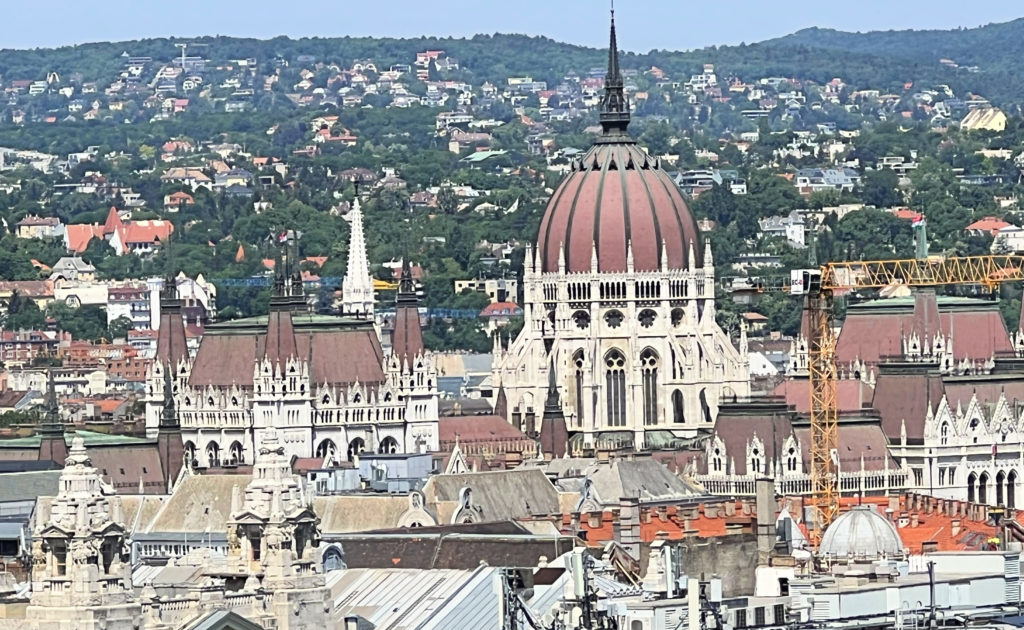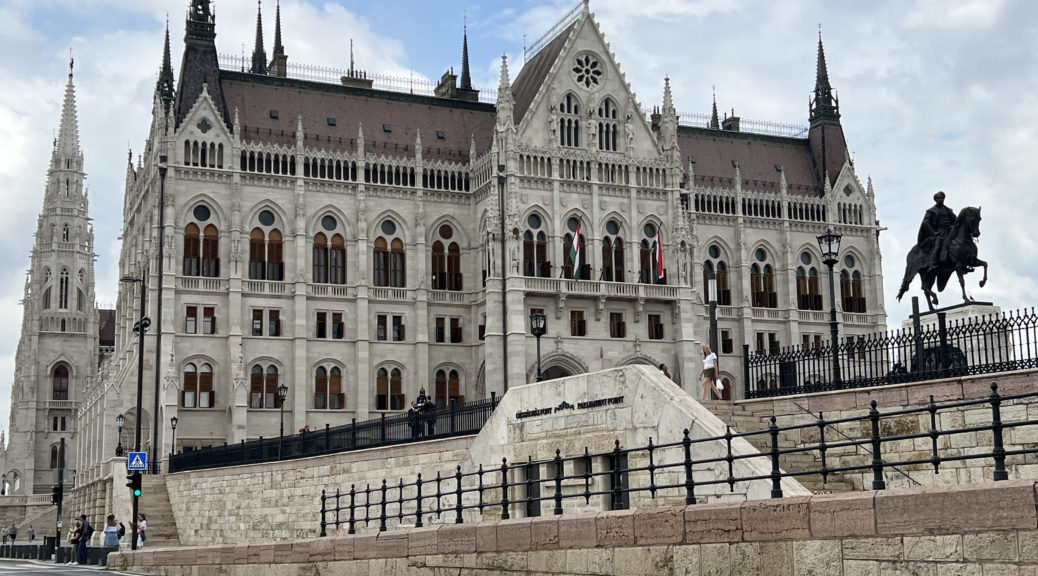
Shoes on the Danube Promenade and the Hungarian Parliament
It probably seems that the Shoes on the Danube Promenade and the Hungarian Parliament are two very dissimilar topics to include in the same post. I did so because the memorial is just south and across the street from the Parliament building. It would be easy to see them both on the same morning or afternoon.
The Shoes on the Danube Promenade is a tribute to the 20,000 Jewish people who died here at the hands of the Arrow Cross, the party of the Hungarian Nazi’s. The people were lined up along the bank of the Danube and forced to remove their shoes – these were valuable during World War II. They were then shot, falling into the river.
The Shoes on the Danube memorial is a collection of 60 pairs of shoes carved from iron. Their style is typical of the 1940s. There were all kinds of shoes – men’s work boots and dress shoes, women’s high heals, and shoes children might wear. It is meant to portray that a person’s gender, age or income didn’t matter. All were vulnerable to this brutality because of their religion.
We noticed there were small stones in many of the shoes. We later learned they can symbolize prayers or are meant as a tribute, much like we might leave flowers at a grave. There are also signs in English, Hebrew and Hungarian that read: “To the memory of the victims shot into the Danube by Arrow Cross militiamen in 1944-45. Erected 16 April 2005.”



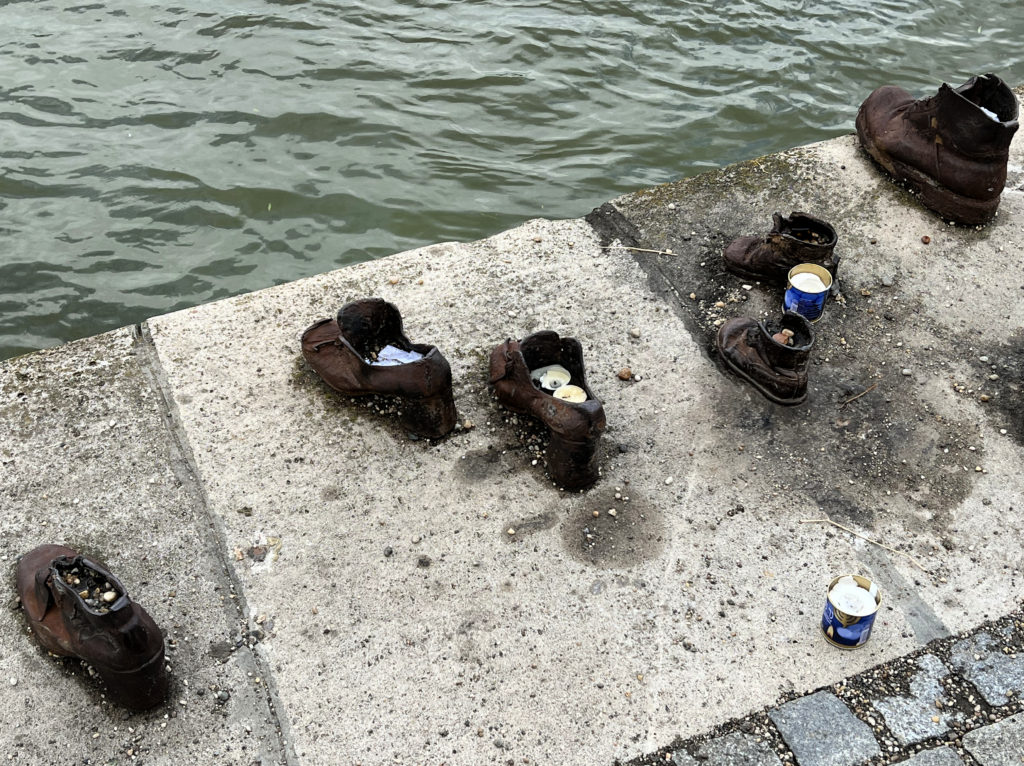

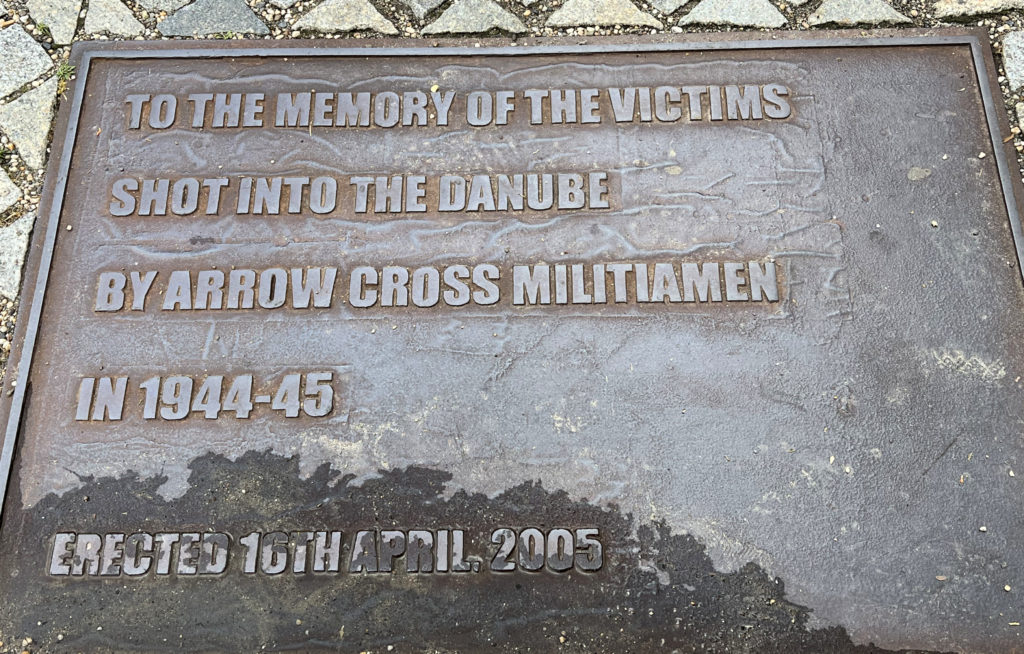
We next walked to The Hungarian House of Parliament, a UNESCO World Heritage Site. The Parliament Building is the seat of the National Assembly of Hungary. It opened in 1902 and is the largest building in Hungary. It is almost 900 feet long and 400 feet wide; the pictures below portray just the width.
When the Parliament was built, it was required that only materials from Hungary could be used in construction. The work could only be completed by Hungarian manufacturers and craftsman. These stipulations were adhered to with the exception of the eight marble columns on the main staircase (interior) which were imported from Sweden.

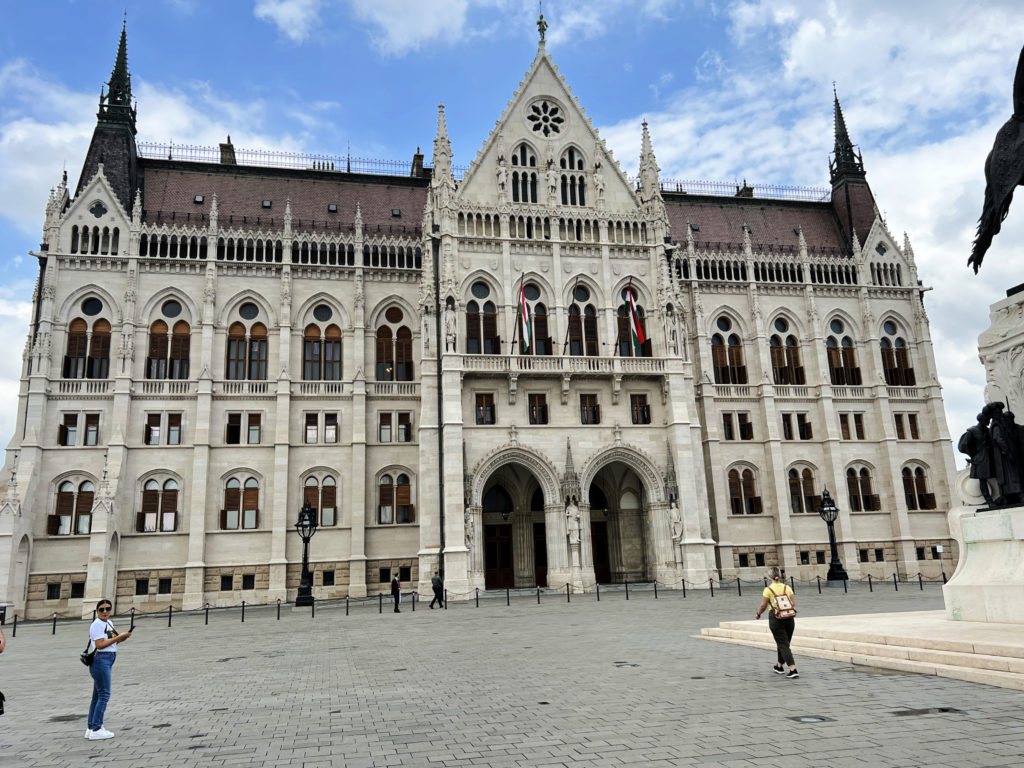
The Parliament Building is on the Pest side of Budapest facing the Danube River, but its main entrance is on the opposite side. The interior includes 10 courtyards, 13 passenger and freight elevators, 27 gates, 29 staircases and 691 rooms. About half a million precious stones and 88 pounds of gold were used to decorate the building. We did not go inside the Parliament because at the time we had Covid and could only be outside with masks. You can visit the inside of the Parliament building as part of a guided tour. As you can see from the second picture below, it is an incredibly beautiful building
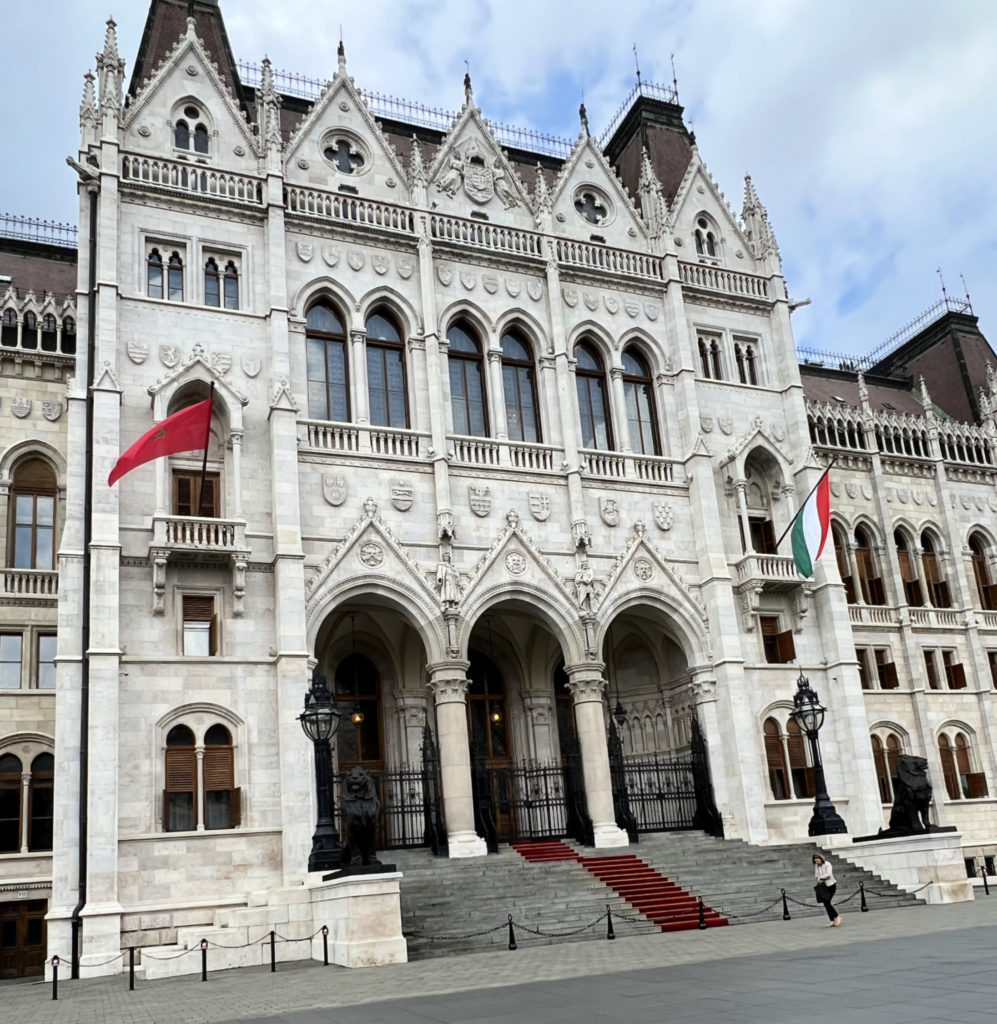

The Parliament’s dome, pictured below, is 96 meters high (315 feet) which symbolizes the year Hungary was settled – 896. There is also a picture of a statue of Francis II Rákóczi. He was the leader of the Hungarian uprising against the Habsburgs and is considered a national hero.
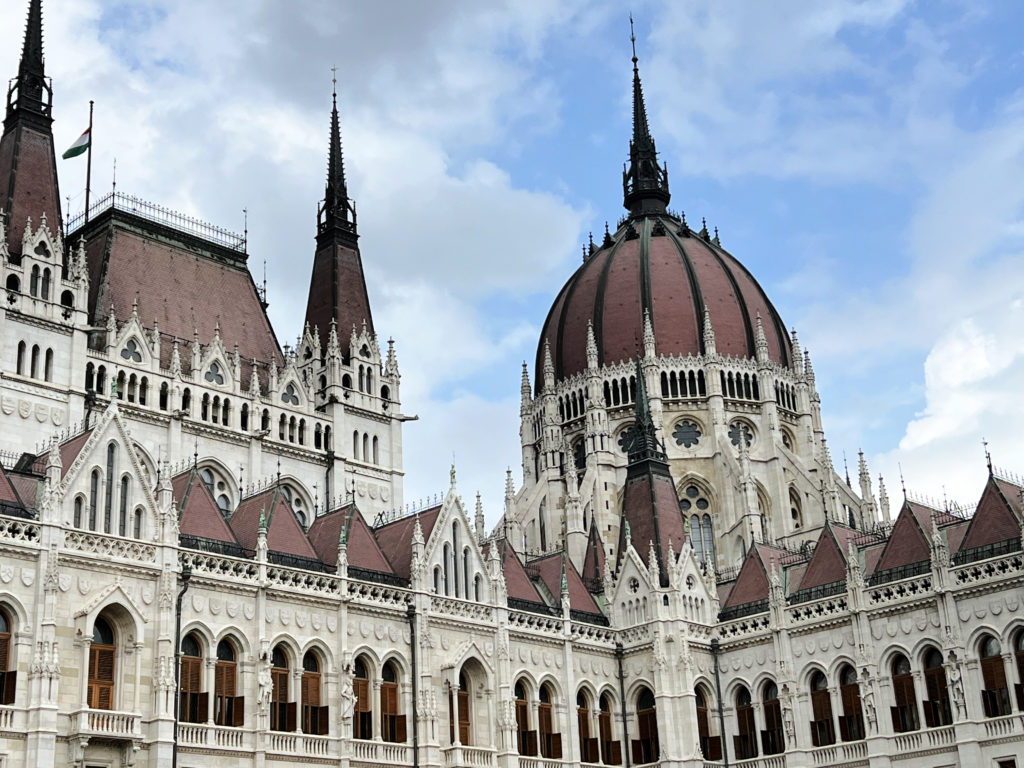

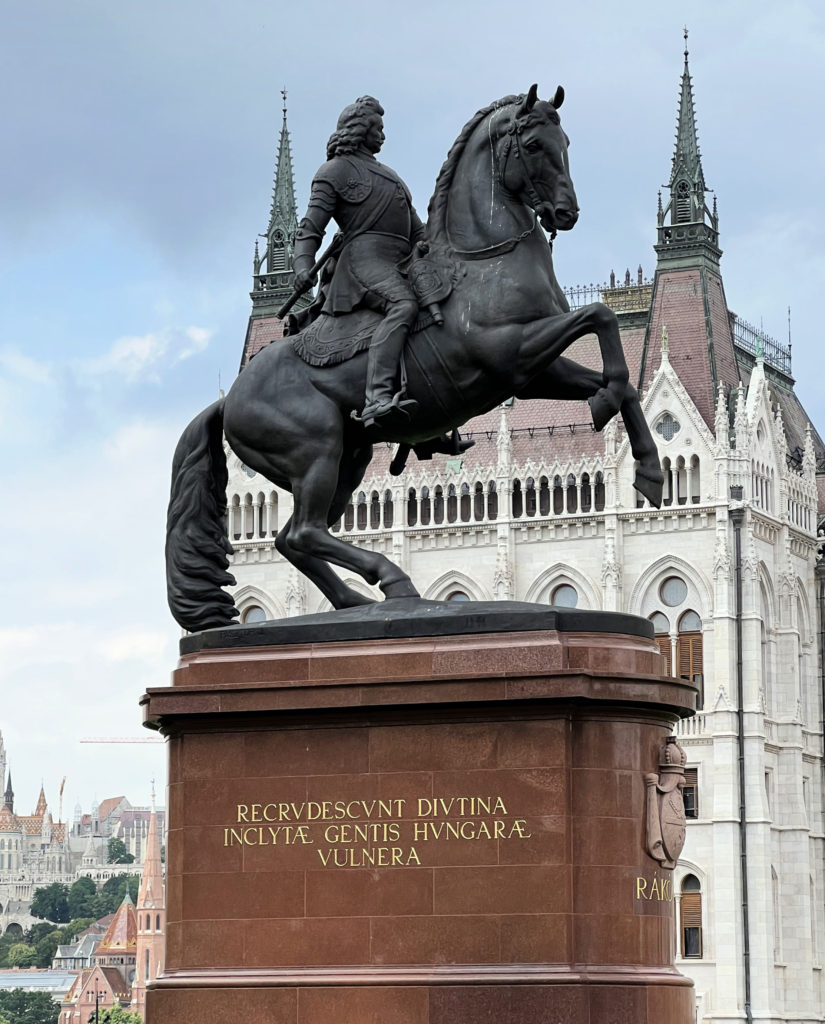
We also saw the Parliament building from two other vantage points. The first picture below was taken from the dome of St. Stephen’s Basilica. The second picture was taken from Fisherman’s Bastion on the Buda side of the Danube. We had hoped to see the Parliament lit up at night on a dinner cruise, but that was something else we had to cancel because of testing positive for Covid. We have some good reasons for a return trip!
